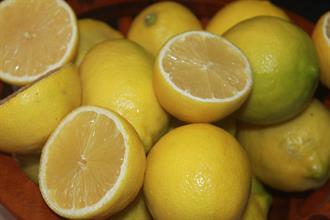Thousands of Fruits to Learn About

We all know what apples, peaches and other common fruits are; but there are a lot more different types of fruits than what most people are aware of: literally hundreds, if not thousands.
Even amongst apples, there are hundreds of different types, and it is the same with all of the other common types of fruits, not to mention the uncommon types.
Consider Citrus
Citrus trees are versatile and useful trees for your garden and can be grown (with care) in many climatic zones. Autumn is a great time for many types of citrus fruit; many varieties ripen in autumn. In fact, if you if choose your varieties carefully, you can extend your harvest of these delicious fruit throughout much of the year as some mature in spring, others in autumn and some in winter.
What better than juicy fruit eaten straight from the tree, home-made marmalade, or your own refreshing and healthy lemonade?
Here are a few less common autumn ripening citrus:
- Bergamot oranges (Citrus aurantium ssp. bergamia): it is not an edible orange, but very scented and aromatic containing rich essential oils. The appearance of the fruit is more like a lime or lemon than an orange. It is used to scent oils, as the flavouring in Earl Grey tea and in alternative health to in the control of ‘bad’ cholesterol. It grows best in needs a Mediterranean climate.
- Etrog (Citrus medica): a thick peeled fruit with little juice used in Jewish religious ritual. The tree grows from 3 – 6m tall and is sensitive to frost and best grown in sub-tropical to tropical areas.
- Budda’s hand (Citrus medica var. sarcodactylis) - the common name refers to the multiple finger like protuberances that make up this fruit. The fruit is only used for its peel which makes great candied peel. It grows best in sub-tropical to tropical areas.
- Kaffir Lime: grown for the leaves which are used in some recipes, especially Indonesian and Malaysian cooking. It must have a frost free protected and sunny position to be at its best. It will grow to 4 m tall in the garden but half that size if grown in pots.
- Pomelo/pummelo (Citrus maxima, syn. Citrus grandis): The fruit of this quite large citrus tree (to 8 m) is very similar to a grapefruit but with a thicker rind and can be quite tart (newer varieties are sweeter). ‘Flicks Yellow’ is suited to cool regions and ‘Nam Roi’ to sub-tropical conditions.
 New Fruits
New Fruits
New types of fruits are constantly being discovered all around the world; and fruits that may have been rarely grown commercially in the past, are gaining commercial markets as cooks strive to find new flavours.
Sometimes these are fruits that have been grown and eaten by natives for hundreds of years, or indigenous plants that were harvested from the wild, in a particular country by the locals.
The food industry is always looking for something a little different; and fruit growers are often finding success in discovering and introducing a variety or species of fruit that no one else can supply.
Why Study with ACS?
Design your own learning pathway.
Study at your own pace, from anywhere, at any time.
Receive prompt, expert support from our team of committed and friendly tutors.
Your learning is our priority. We are flexible and adaptable to meet your educational needs!
Enrolling is easy - just go to the top of this page and select your study method and payment option.
If you have any questions about studying with ACS, or want to know more about any of our courses, get in touch with our specialist tutors today. They will be happy to answer your questions and look at different study options to fit in with your goals.